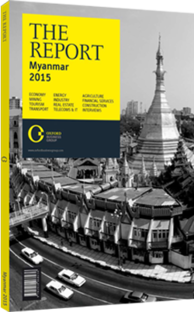Re-establishing Myanmar as a major regional rice producer
Between the 1950s and 1960s, Myanmar was the largest rice exporter in the world. Today, it places behind world leaders Thailand and Vietnam. Even in rice production levels, fellow ASEAN nations such as Thailand, Vietnam, Indonesia and the Philippines are yielding more than Myanmar. However, the potential is high for the land- and water-rich Myanmar to become a major regional rice player if it succeeds in upgrading its infrastructure and institutional support.
In Figures
The country’s rice is cultivated on 18.9m ha of land, constituting 33% of total crop area sown. The major production areas are the Ayeyarwady Delta, Bago in lower Myanmar, and Sagaing. The Myanmar government policy in 2011 was to export 4m tonnes of rice by 2020. The policy got off to a good start, with exports standing at 1.3m tonnes in 2011. However, exports began to dip thereafter for a number of overlapping reasons. The Myanmar Rice Exporters Association stated total rice exports in 2013/14 stood at about 1.2m tonnes, down from 1.47m tonnes the year before. While bad monsoons for two consecutive years played a role in the reduction of production, the bigger issues facing Myanmar’s rice cultivation targets range from low production to poor marketing; from poor-quality seeds to antiquated farming methods; and from ageing mills, inadequate handling and storage of crops to insufficient financial support for farmers.
A report by the World Bank and the Livelihoods and Food Security Trust Fund (LIFT) of Myanmar in June 2014 stated that Myanmar has the potential to increase its rice exports by diversifying and increasing rice production, opening its rice milling sector to direct foreign investments and reducing export procedure costs.
Challenges
At present, production is limited to low-quality grain and mainly sold to African nations, generating only low income for farmers, with no major investments coming into the rice farming sector. However, the demand for low-quality rice is dropping. To compete, Myanmar will need to modernise its milling sector as some of its mills are more than 100 years old and run on steam engines. Another World Bank report said that almost 20% of quality and quantity are lost during the milling process of an average rice mill. Upgrading these mills requires long-term credit, technical and managerial know-how, and low-cost, reliable electricity. These are not available in Myanmar today, the report stated. The World Bank has recommended that the government open its milling, warehouse and trade sectors to direct foreign investment. It has also proposed local banks give longer-term credit at more than 12 months. Presently, credits are only granted for six months, making it difficult for the farmers to repay.
Daw Swe Mon Aung, the agricultural specialist at the US Department of Agriculture at the US Embassy in Yangon, said Myanmar was looking into the problematic areas and has been working with Chinese and Vietnamese experts to produce hybrid seeds that could improve quality and quantity. Efforts have also been taken to improve the mechanisation of farming, especially in modernising the mills. It is still a work in progress as Myanmar needs to improve its infrastructure and reduce export procedure costs. Farmers must also work to increase agricultural productivity and change farming practices. They must also bring a new choice of rice varieties that are in demand in the global market today.
Actively Expanding
The signs look promising for Myanmar, with a new bilateral agreement on rice standards signed with China in 2014 that would allow Myanmar to export an expected 200,000 tonnes of milled rice to its neighbour starting from early 2015. In October 2014 the Myanmar Rice Federation also agreed to supply 240,000 tonnes of rice per year to two states in north-eastern India. Another local media report stated that Myanmar has also received an order for about 500,000 tonnes of rice from the Indian government in September 2014. This is equivalent to 40% of Myanmar’s total rice exports in 2013. Myanmar’s rice trading firm, Myanmar Agribusiness, announced in September 2014 it aims to increase rice exports to Japan in 2015 to 10,000 tonnes, up 70% from 2014 figures.
You have reached the limit of premium articles you can view for free.
Choose from the options below to purchase print or digital editions of our Reports. You can also purchase a website subscription giving you unlimited access to all of our Reports online for 12 months.
If you have already purchased this Report or have a website subscription, please login to continue.

